We had no set agenda when we arrived at the port of Nuku’alofa this morning. I had watched the ship destination expert’s port lecture and he was a bit uninspiring. Mum was keen to check out the rugged coastline and see the blowholes and I was more interested in the 12thC Ha’amonga Trilithon… so we were considering hiring a cab to take us to these places and then spend the rest of the day pottering around the markets or in town.
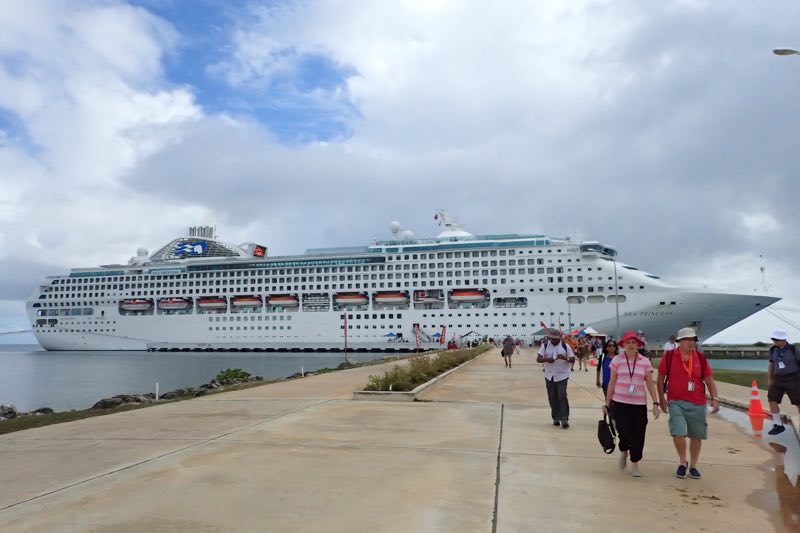
Instead we wandered off the ship, wandered through the first section of markets and money changers and straight into a very friendly Tongan woman named Priscilla who worked for a tour company named Tonga Huangdong Tours (there is a strong Chinese presence in Tonga – some of which has created tension and even civil unrest over the last decade when many migrated here from Hong Kong when the Chinese government reclaimed the island). Priscilla showed us the full day tour she was taking guests on, and it just happened to take in both the highlights we were interested, so we signed up. $50 per person for a 6-hour tour, compared to $79 per person for a 3-hour ship tour? Sounds like a plan.
We had half an hour before the tour was departing so we walked into town to have a quick look around. There are loads of handicrafts and souvenir market spaces near the port that are selling things that are unique and unusual and yet also oddly familiar. Having been to Vanuatu, Fiji, New Caledonia and even Papua New Guinea in the past – the tribal looking artworks are somewhat familiar but all have their own unique artistic slant on them. Wood carvings, bone carvings, pearls, painted and plaited fibre made into pictures and bags, sarongs, horn, leather work… so many handicrafts, and all of it lovely in its own right – and absolutely none of it even remotely goes with the decor in my house! So my wallet was safe.
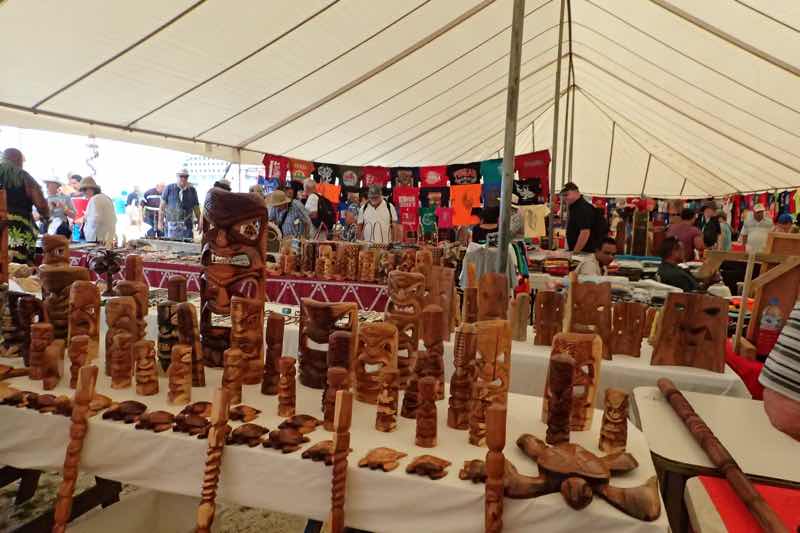
After having a look at the markets, we went down to the Catholic Basilica – a huge round timber building with an enormous traditional style rounded ceiling. Such a beautiful building. It becomes rapidly obvious after even just a few hours in Tonga that religion and religious organisations is an integral part of the social structure here. Many of the schools are attached to churches – there are Catholic, Seven Day Adventist and more Mormon schools than you can poke a stick at.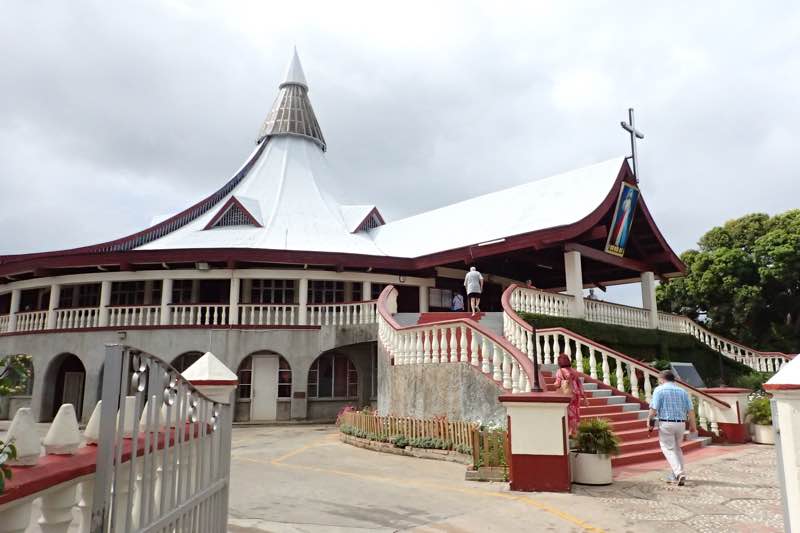
Missionaries and traders, came here following the first European explorers – Abel Tasman supposedly sailed past Tonga is the 1600s, and Captain Cook landed and named the archipelagos when he visited in 1773 and 1777… he named them The Friendly Islands – though as folklore has it, the local chiefs were debating who was going to get the opportunity to kill and eat his men while he was naming them thus! Anyway, I digress, somehow Tonga managed to not become a part of the Commonwealth and has held it’s indigenous governing structure since becoming a constitutional monarchy in 1875. It was a protectorate of sorts under Great Britain from 1900 – 1970 but throughout was still an independent sovereign nation. Everywhere else in the Pacific ended up colonised and administered by Europeans, so well done there, Tonga!
Nuku’alofa, which apparently means ‘the home of love’ is the capital of Tonga and is on the island of Tongatapu. Even though it is the largest island in the group – it is still barely 32kms across and 15km wide. Still, for such a small island, there’s plenty to see. Our first stop on the tour with Priscilla and Sam, my brother the bus driver, was the Royal Palace which dominates the waterfront not far from the port. The Royal Palace is no longer the primary residence of the King of Tonga – he has a huge mansion just outside of town, and a matching one for the dowager Queen just across the road – the starkly white painted palace is now primarily an official reception centre.
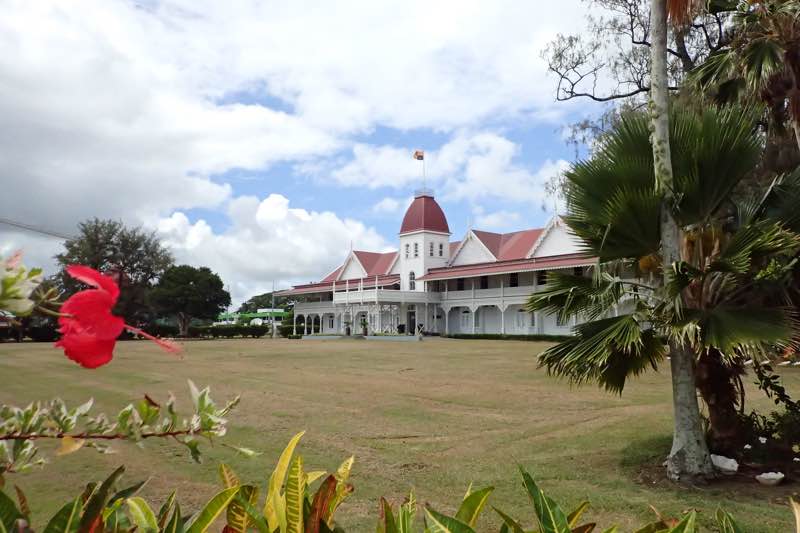
Priscilla turns out to be quite the character, she cackles like a crazy lady hatching a seriously evil plot, and her English is charming – she mixes up her words quite frequently, and she’s hard to understand, but it is lots of fun… “They learn the kids not to throw the rubbish out the car, used to be very dirty dirty here, but now, Tongans eat and take rubbish away not throw out the window.”
After this, we went to see the Royal Tombs, which are the final resting place of King George Tupou I, founder of modern Tonga, and his descendants. Weird thing the Tongan royal family – not allowed to marry ‘commoners’. I was unsure if our guide was aware of the negative associations of being a ‘commoner’ … she used it more in a sense to denote someone who was ‘not royal’, whereas in English, it definitely carries an implication of being underclass. *shrug*
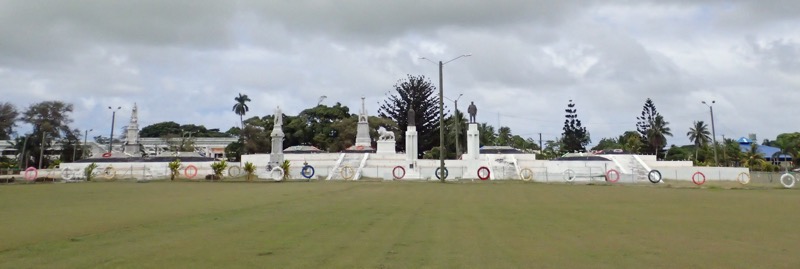
We then went to the eastern most point of the island to see the Abel Tasman marker which oddly commemorates Abel Tasman’s passing near Tonga, because it is completely un-confirmable that Abel Tasman actually visited Tonga. Very odd.
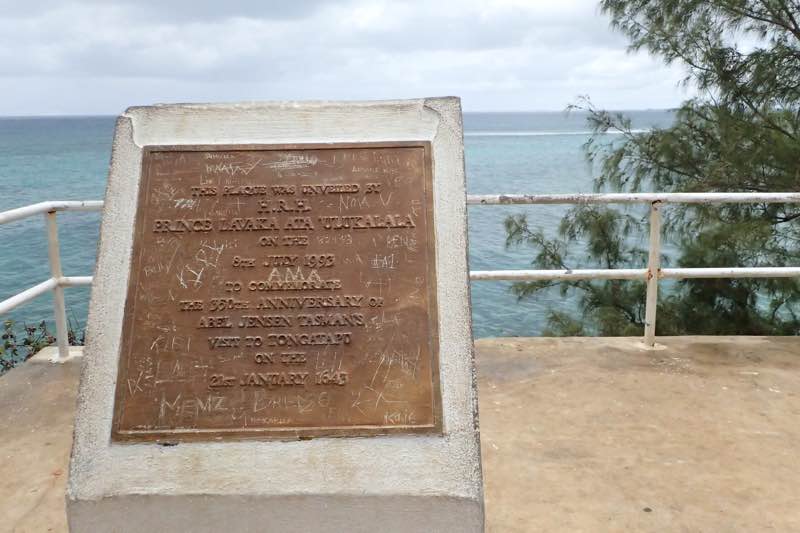
Following our drive out to the western most point of the island, we were hustled past the one thing that neither Aunty Mary nor I had any interest in at all – of all things they could turn into a questionable ‘tourist attraction’, a flying fox colony is right up there with a colonoscopy clinic. “Next we got to see the flying fox,” intoned Priscilla, “It is a especial bird of Tonga, very especial bird. They are protected from the eating and very especial for the royal family… if they find a white flying fox, it means very bad luck for them. So they sleep here all day and fly around at night time to harvest your fruit.” Hmmm… very special birds indeed! I was expecting some horror guano cave like one would find in North Queensland with hundreds of the noisy flying rats squeaking about the place and the ground six inches deep in bat shit! Instead, we were shown a couple of trees that had only about 40 fruit bats hanging about. There were more fruit bats living in the old turpentine mango tree in the back neighbour’s yard when I was a kid.
What was interesting about this stop was the crazy arse cemetery that lies encircles the protected bat colony!! The Tongans, for the most part, do not have formal headstones on tombs for departed relatives (Royalty excluded of course), but instead, they decorate the tombs of their departed family members with handmade quilts, crocheted blankets, tinsel, plastic candy canes, and odd solar powered lanterns. It was a very striking and colourful display, quite unlike anything I’ve ever seen in a cemetery or burial place before. It was also to my Western eye, extremely tacky… but hey, I don’t want to be all judgey, maybe candy canes on my own grave would be a nice stripey touch.
After the bat shit stop, we were off to check out Aunty Mary’s pick, the Chief’s Whistles on the island’s western coast which are known as the most spectacular blow holes in the South Pacific. It is a stretch of limestone cliffs ranging some 8 km along Mapu ‘A Vaea. The blow holes were quite spectacular, I could have watched them for hours. The blow holes needed only a very little pressure from the high tide waves to send half a dozen whistling spouts of water into the air in each direction. It really was quite an awesome spectacle.
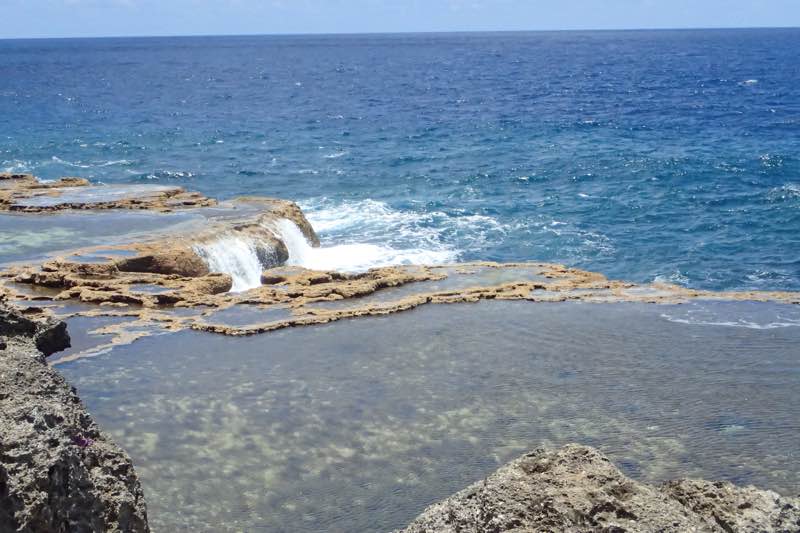
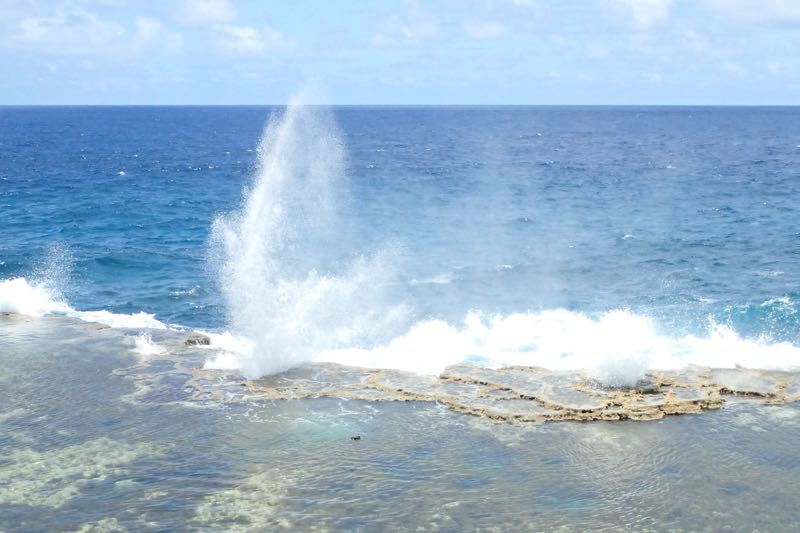 From here, Li took us to… a Chinese Dairy for an opportunity to buy some snacks and chips and things for the rest of the afternoon’s drive. The Tongan people are less than thrilled at how the Chinese are coming to Tonga and taking over retail and tourist opportunities. Tensions have run so high as to result in civil unrest about ten years ago, resulting in several fatalities. Unfortunately, it is one of those situations of clashing cultures – the Tongans are laid back, live on ‘island time’, and are very much ‘no worries bro’… in contrast, the Chinese are very industrious, organised and focused in their business endeavours. So the Chinese are kinda taking over and the locals are none too happy about it, while all the while having a reputation for being too lazy to do anything about it. :/ Not good.
From here, Li took us to… a Chinese Dairy for an opportunity to buy some snacks and chips and things for the rest of the afternoon’s drive. The Tongan people are less than thrilled at how the Chinese are coming to Tonga and taking over retail and tourist opportunities. Tensions have run so high as to result in civil unrest about ten years ago, resulting in several fatalities. Unfortunately, it is one of those situations of clashing cultures – the Tongans are laid back, live on ‘island time’, and are very much ‘no worries bro’… in contrast, the Chinese are very industrious, organised and focused in their business endeavours. So the Chinese are kinda taking over and the locals are none too happy about it, while all the while having a reputation for being too lazy to do anything about it. :/ Not good.
Anyway, the Natural Bridge was our next sight to see, and it was also along the western coast between Hufangalupe Beach and ‘Ahononou Beach… in either direction were stunning limestone cliffs plummeting down to the ocean. Absolutely stunning landscape, the likes of which I have not seen since the Cliffs of Mor in Ireland. Weirdest thing was – not a barrier, handrail, walkway, fence, staircase or lookout point in sight! Holy shit Australian OHS official would have had conniptions at the idea of taking tourists anywhere near the place. So with our guide in her Havianas and the average age of her pax pushing 70 years of age, we went wandering along the cliff edges checking out the Natural Bridge and admiring the sea crashing into the cliffs forty meters below! Oi!
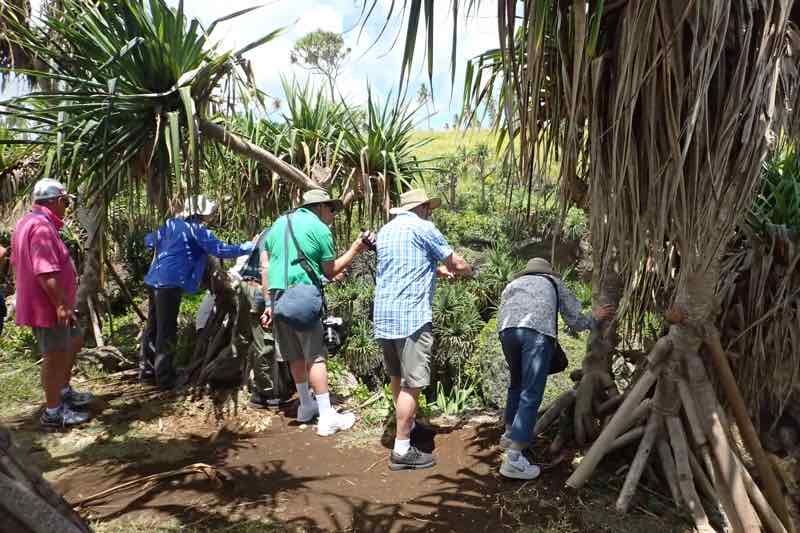
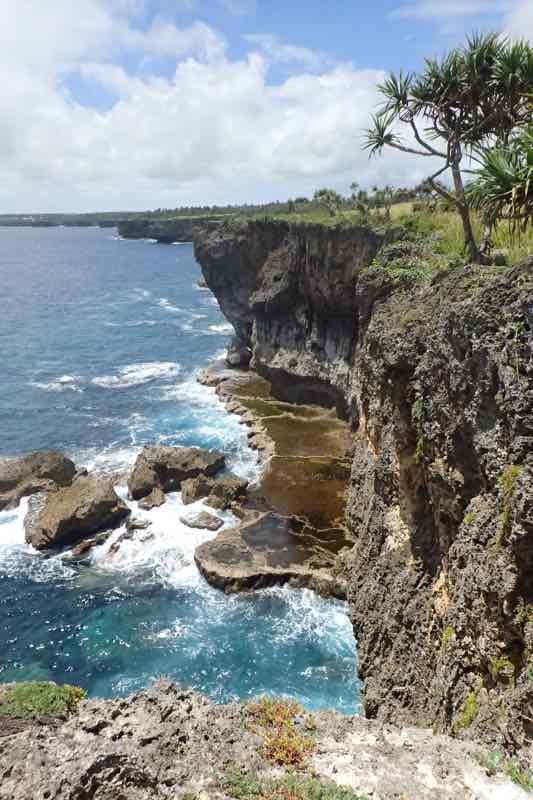
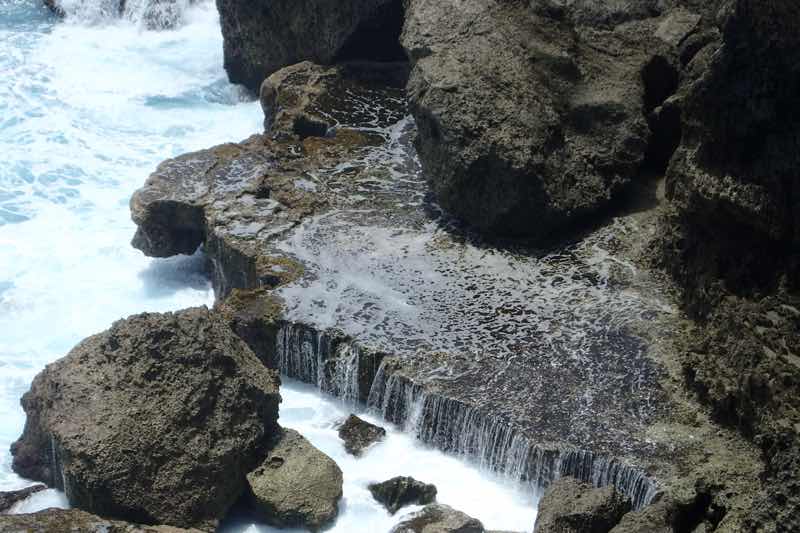
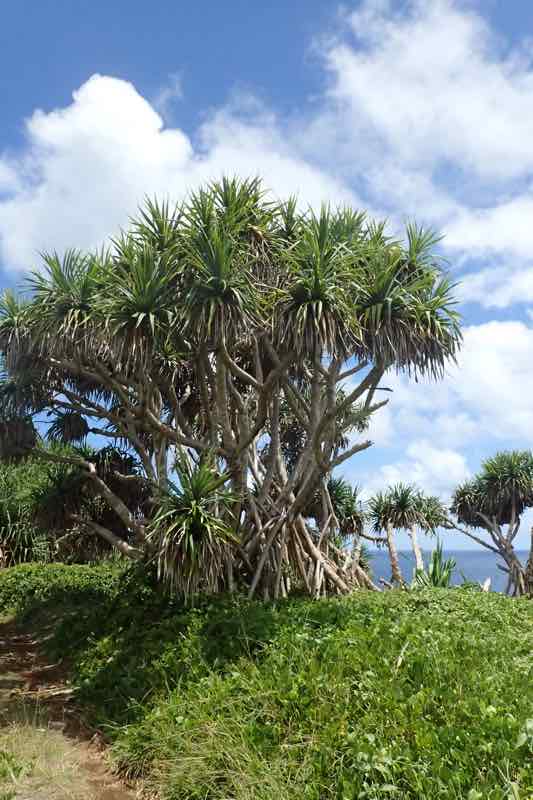
Next, we ventured off to see the “three head, one coconut”. Yes, I was confused as well. It turned out to be a freakish coconut tree that had splits in the trunk giving it three fruit-bearing heads. It seems Tonga, quite literally, has no street addresses – none at all. No street names and no house numbers. Mail for the entire island is delivered to a mail centre in the capital and collected by each village’s mail collector – who then delivers it based on the fact that they know everyone personally. So when giving directions to places, they most frequently do so using local landmarks, and as it turns out, this coconut tree is a particularly well-known local landmark, as it is quite the oddity. “The coconut are plenty plenty in Tonga. And we use all of the coconut from the roots to the leaves. The leaves are used for the roof of the fale (family home) – it doesn’t leak, you know. We also use the coconut to make cream, water, and the husk is used to make a skirt for the Tongan men. They so smart to make money off everything and is none quite to waste.”
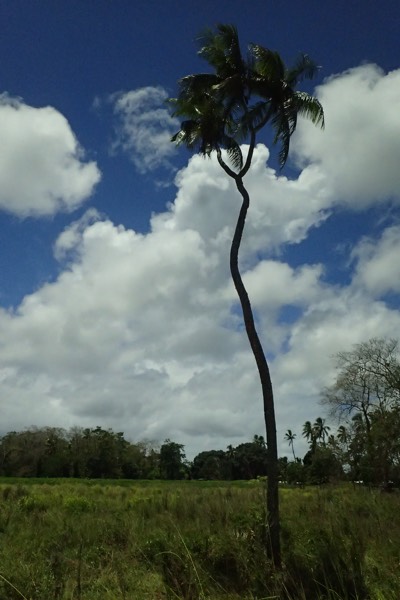
People supplement their income here primarily by farming – bananas, tapioca, kumara, and other primary consumables, Priscilla informs us that tapioca looks a bit like marijuana, so some islanders hide dope in among their tapioca crops, “Eat tapioca and be big and strong like me and Sam, not like Li, who eat only rice and noodles and he too skinny.” Li, being the slight Chinese man who is with us and obviously her boss!
The village lifestyle is one that has lots of chickens roaming around uncooked, and pigs, likewise roaming around without fences. We are told later that these resources belong to the village and if a family is hungry, they can help themselves to a pig, with the only consideration being not to eat them out. If you move into the village, you would farm the family plot with your family – Tongans live very much an extended family situation looking after their elderly at home until they pass away, there are no care facilities in Tonga. Each village has a chief, a church, a school and a brightly coloured cemetery plot.
We then head inland towards the large internal lagoon called the Cradle of Polynesia, where we found a marker to well, mark, Captain Cook’s actual documented landing site. 🙂 The mangroves surrounding the area looked just like home, and our driver Sam reports that he comes down to the lagoon to catch enormous mud crabs and do some spear fishing. Each week he goes spear fishing to catch some food for the old folks in his village who can no longer fish anymore. What a gem! Wish he was bringing me fresh fish each week!
The next stop was the most remarkable in my humble opinion. It is called the Ha’amonga Trilithon. It’s an ancient monument as inexplicable as Stonehenge. Believed to have been constructed circa 1200AD, the Trilithon is a dolmen style arch and lintel that may have served as an astrological calendar, aligning with the summer and winter solstices. Incredibly the stones themselves are faced to the island of Wallis (in Wallis and Fortuna) and must have been transported by boat! Eight hundred years ago! How did they do it?!
Anyway, after this we had a lovely drive through all the villages and farmland back to the ship. Tonga is a beautiful and surprising place, I’d love a chance to come back and go visit some of the more remote islands which I am guessing are an unspoilt paradise.
